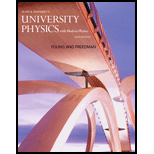
By measuring the electric and magnetic fields at a point in space where there is an
The direction of electromagnetic wave by measuring electric and magnetic fields.
Explanation of Solution
The propagation direction of electromagnetic wave is perpendicular to vectors of electric filed and magnetic field.
Assume direction of electric filed and magnetic field can be found at a point in a space. The direction of propagation wave can be found by taking cross product of electric filed and magnetic field
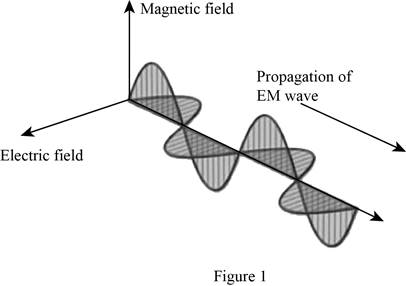
From figure 1, electromagnetic wave direction is perpendicular to the vectors of electric filed and the magnetic field. Therefore, direction of electromagnetic wave is opposite to direction of
Conclusion:
Therefore, direction of electromagnetic wave is opposite to direction of
Want to see more full solutions like this?
Chapter 32 Solutions
University Physics with Modern Physics (14th Edition)
Additional Science Textbook Solutions
Physics for Scientists and Engineers with Modern Physics
Essential University Physics: Volume 1 (3rd Edition)
Sears And Zemansky's University Physics With Modern Physics
Conceptual Physical Science (6th Edition)
University Physics Volume 1
College Physics: A Strategic Approach (3rd Edition)
- The maximum magnetic field strength of an electromagnetic field is 5106T. Calculate the maximum electric field strength if the wave is traveling in a medium in which the speed of the wave is 0.75c.arrow_forwardIllustrate that the size of details of an object that can be detected with electromagnetic waves is related to their wavelength, by comparing details observable with two different types (for example, radar and visible light or infrared and X-rays).arrow_forwardPolice radar guns measure the speed of moving vehicles by transmitting electromagnetic waves at a vehicle and detecting a Doppler shift in the reflected wave. Suppose police radar transmit at a frequency of 24.0 GHz and receives a wave reflected from a car moving toward the radar at 65.0 mph. Find the frequency shift f = f0 fs between the observed (received) and source (transmitted) frequencies.arrow_forward
- Police radar guns measure the speed of moving vehicles by transmitting electromagnetic waves at a vehicle and detecting a Doppler shift in the reflected wave. Suppose police radar transmit at a frequency of 24.0 GHz and receives a wave reflected from a car moving toward the radar at 65.0 mph. Find the frequency shift f = f0 fs between the observed (received) and source (transmitted) frequencies.arrow_forwardWhat is the maximum electric field strength in an electromagnetic wave that has a maximum magnetic field strength of 5.00104T (about 10 times the Earth’s)?arrow_forwardSuppose a source of electromagnetic waves radiates uniformly in all directions in empty space where there are no absorption or interference effects. (a) Show that the intensity is inversely proportional to r2, the distance from the source squared. (b) Show that the magnitudes of the electric and magnetic fields are inversely proportional to r.arrow_forward
- Create Your Own Problem Consider electromagnetic fields produced by high voltage power lines. Construct a problem in which you calculate the intensity of this electromagnetic radiation in W/m2 based on the measured magnetic field strength of the radiation in a home near the power lines. Assume these magnetic field strengths are known to average less than a T. The intensity is small enough that it is difficult to imagine mechanisms for biological damage due to it. Discuss how much energy may be radiating from a section of power line several hundred meters long and compare this to the power likely to he carried by the lines. An idea of how much power this is can be obtained by calculating the approximate current responsible for T fields at distances of tens of meters.arrow_forwardDuring normal bee?ng, the heat creates a maximum 4.00mv potential across 0.300 m of a person’s chest, creating a 1.00-Hz electromagnetic wave. (a) What is the maximum electric field strength created? (b) What is the corresponding maximum magnetic field strength in the electromagnetic wave? (c) What is the wavelength of the electromagnetic wave?arrow_forward
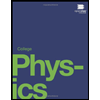 College PhysicsPhysicsISBN:9781938168000Author:Paul Peter Urone, Roger HinrichsPublisher:OpenStax College
College PhysicsPhysicsISBN:9781938168000Author:Paul Peter Urone, Roger HinrichsPublisher:OpenStax College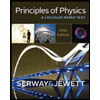 Principles of Physics: A Calculus-Based TextPhysicsISBN:9781133104261Author:Raymond A. Serway, John W. JewettPublisher:Cengage Learning
Principles of Physics: A Calculus-Based TextPhysicsISBN:9781133104261Author:Raymond A. Serway, John W. JewettPublisher:Cengage Learning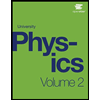
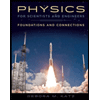 Physics for Scientists and Engineers: Foundations...PhysicsISBN:9781133939146Author:Katz, Debora M.Publisher:Cengage Learning
Physics for Scientists and Engineers: Foundations...PhysicsISBN:9781133939146Author:Katz, Debora M.Publisher:Cengage Learning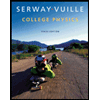 College PhysicsPhysicsISBN:9781285737027Author:Raymond A. Serway, Chris VuillePublisher:Cengage Learning
College PhysicsPhysicsISBN:9781285737027Author:Raymond A. Serway, Chris VuillePublisher:Cengage Learning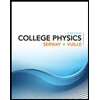 College PhysicsPhysicsISBN:9781305952300Author:Raymond A. Serway, Chris VuillePublisher:Cengage Learning
College PhysicsPhysicsISBN:9781305952300Author:Raymond A. Serway, Chris VuillePublisher:Cengage Learning





